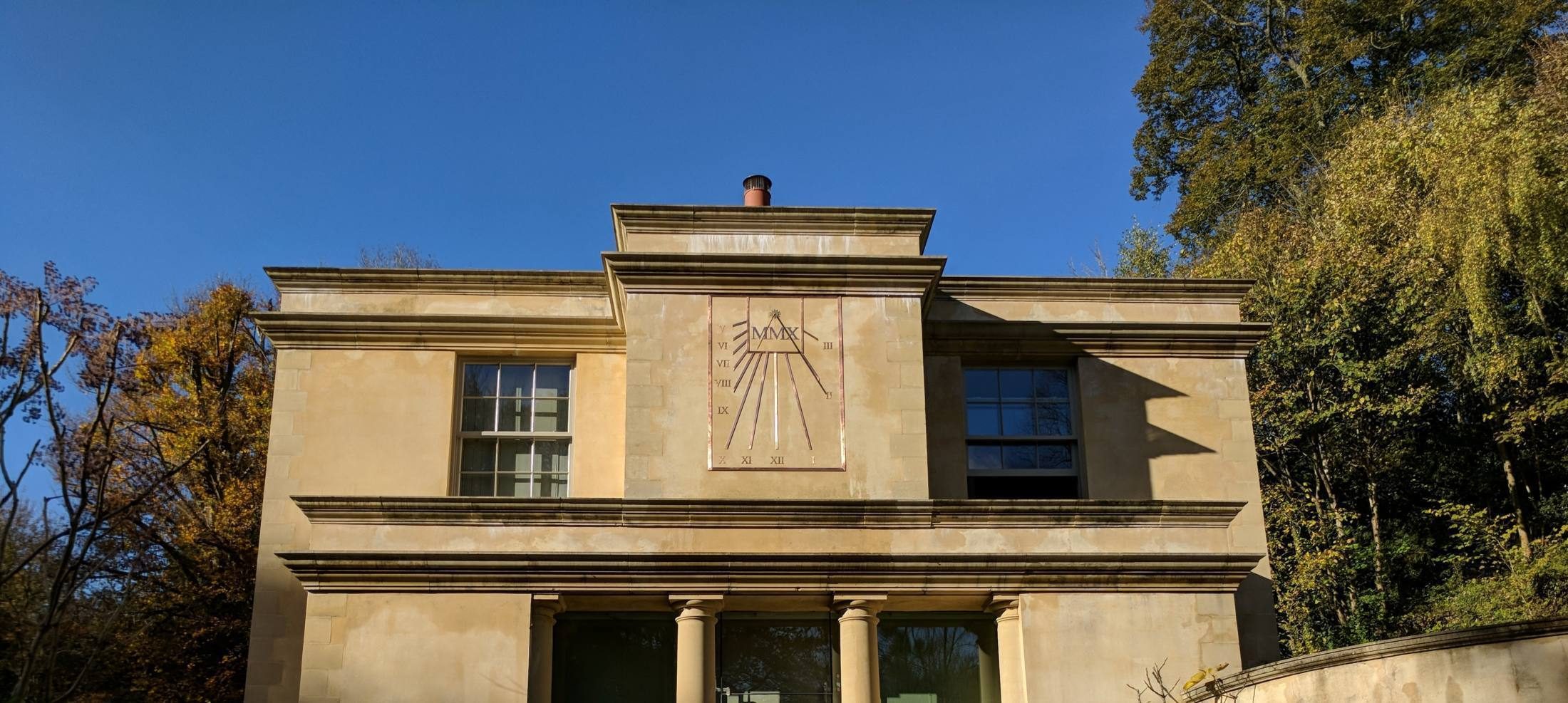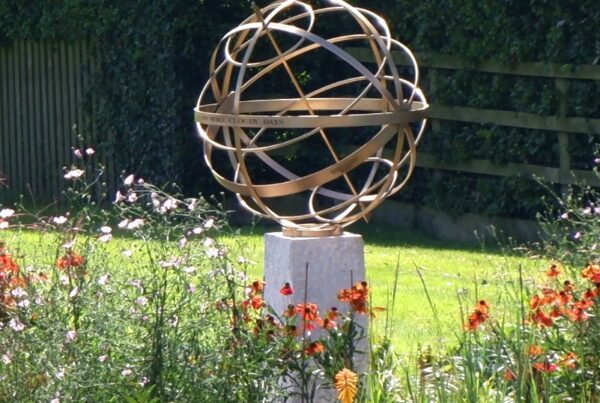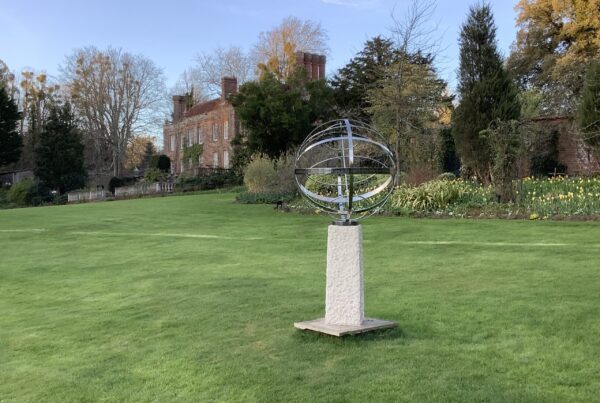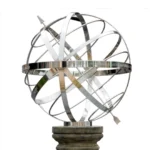When considering the design of a vertical sundial there are several important aspects to take into account. Here are some key considerations that we would suggest thinking about at the design stage.
Dial Plate and Hour Lines: The dial plate is the surface on which the hour lines and other markings are inscribed. Determine the material, shape, and size of the dial plate. Common materials include bronze, brass, stainless steel, stone, enamel or even glass. Choose a material that is durable, weather-resistant, maintainable and complements the overall design. Think about the shape of the plate, triangular, square, oval, rectangular, which would suit the location best. Or you may wish to consider a Strip Dial, which has no dial plate as the numerals and hour lines are mounted directly onto the wall. A strip dial can often allow for a larger dial without becoming overpowering on the facade of the building.
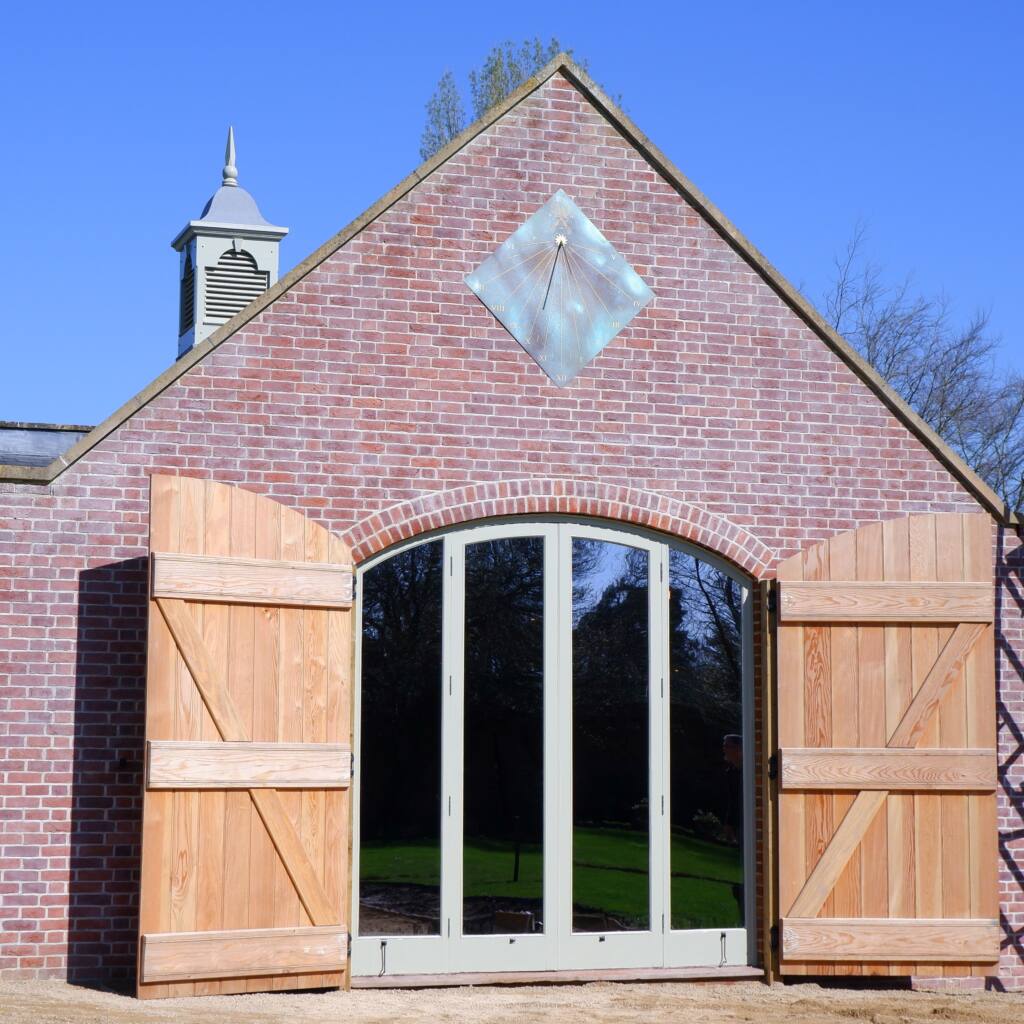
Style and Aesthetics
Determine the overall style and aesthetic that you desire for the sundial. Consider whether you prefer a traditional, classic design or a more modern and contemporary look. Explore different sundial designs and styles to find one that resonates with your personal taste and complements the surrounding environment. You may wish to consider the building materials and paint work close to the dial.
The Gnomon: The gnomon is the part of the sundial that casts the shadow to indicate the time. Consider the shape, length, and angle of the gnomon. Common gnomon styles include triangular, rod-shaped, or unique custom designs. We would almost always recommend a rod-shape for a Vertical dial but you may wish to have a motif such as a sun or star at the base of the rod. The gnomon could be painted or gilded. If the dial is situated on an East or West facing wall the design may also necessitate a flying gnomon which will make the most of sunshine hours.
Hour Line Markings: Decide on the style and readability of the hour line markings. The hour lines should be accurately calibrated to provide accurate time readings. Consider the use of Roman numerals, Arabic numerals, or other symbols to indicate the hours. The style of your numerals will be key to the aesthetic you wish to create.
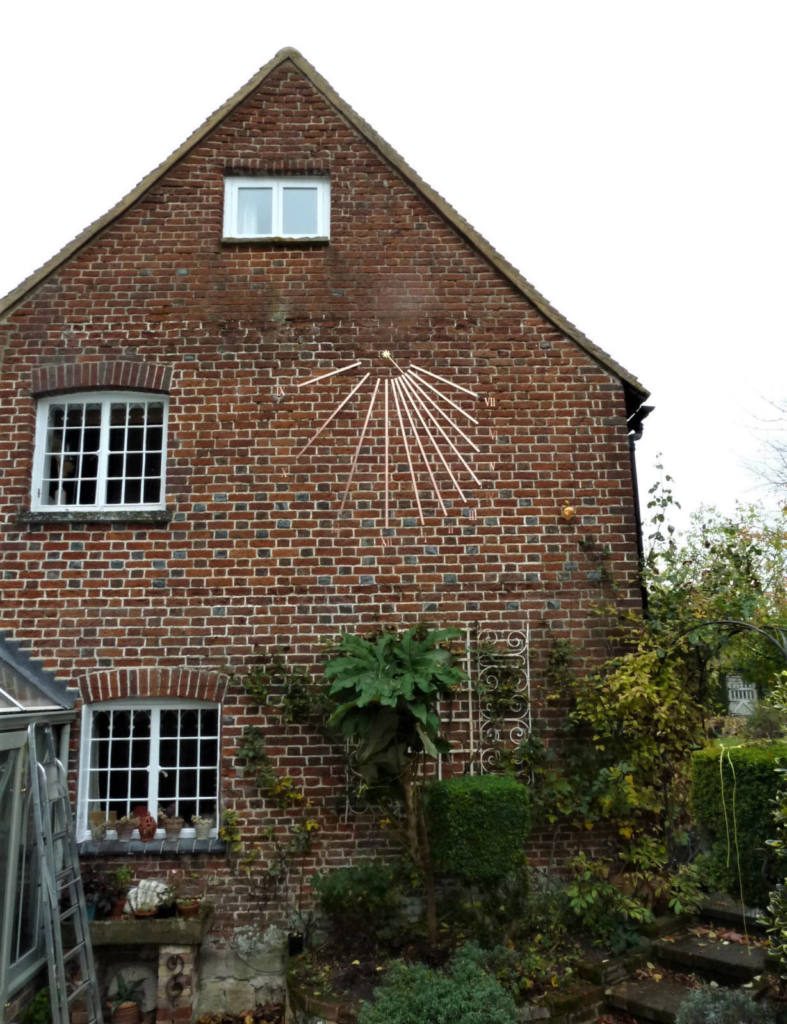
Consider whether you want to add any decorative elements, engravings, or inscriptions to personalize the sundial. These can include personal quotes, dedications, or symbols that hold special meaning to you or the location where the sundial will be installed.
Ornamentation and Engravings
Size and Placement: Determine the appropriate size of the sundial based on its intended location and visibility. Consider the scale and proportions of the sundial in relation to its surroundings. Additionally, think about the best placement to ensure proper alignment with the sun and avoid obstructions that may cast shadows on the sundial.
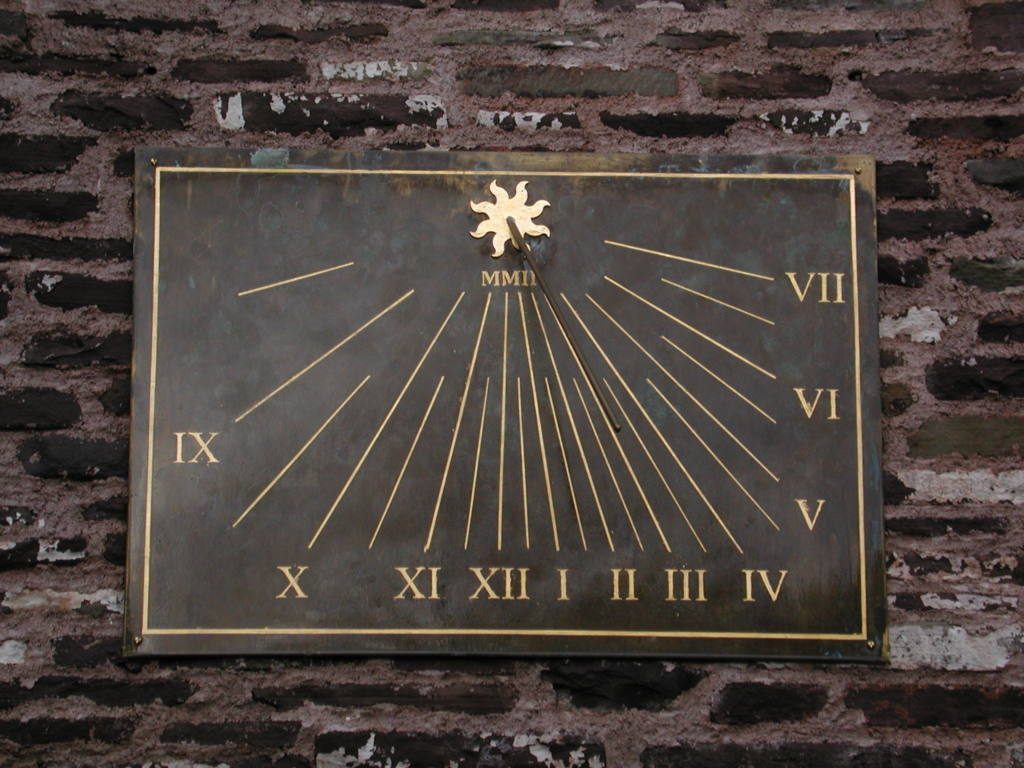
Illumination: If you desire the sundial to be visible at night, explore options for incorporating illumination, such as solar-powered lights or indirect lighting, to allow the sundial to be enjoyed even after sunset.
By carefully considering these design aspects, you can commission a vertical sundial that not only functions accurately but also becomes a beautiful and meaningful addition to its surroundings.

